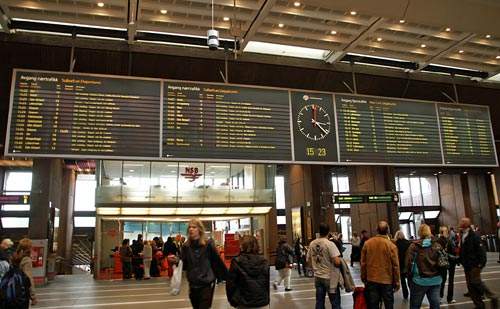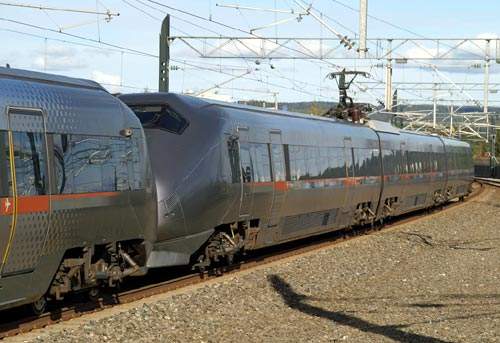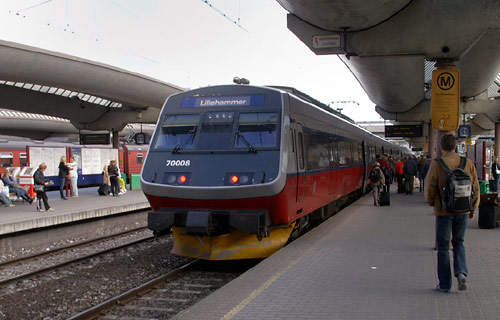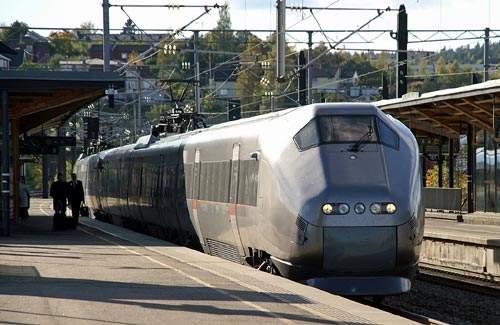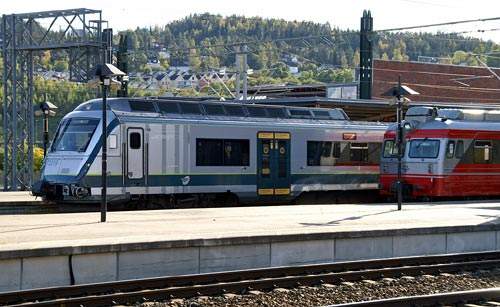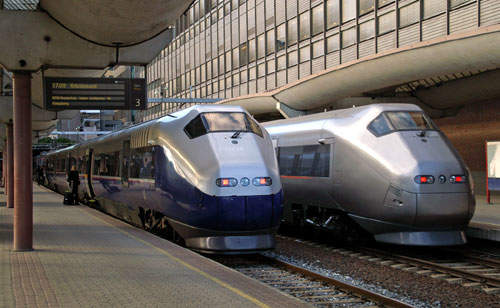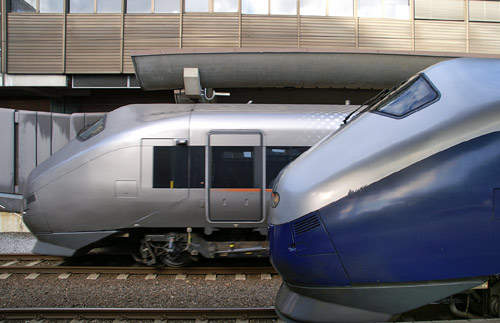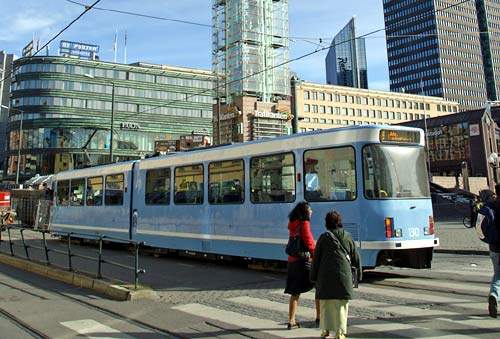Through a combination of overcrowding, a lack of expansion options and no rail links, all in the context of forecasted long-term rising demand, the Norwegian government decided to replace Oslo Fornebu as the capital’s principal airport.
Out of several candidates, Gardermoen near Ullensaker to the north-east of Oslo was chosen for the development in 1992. Although near an existing railway, it would not meet the requirement for the new airport to have a high proportion of travellers and workers going to or from the location by rail.
Accordingly, a new high-capacity link to Oslo Sentralstasjon (Oslo S) became an integral part of the project, and given the near-50km (31 miles) distance from Oslo, it would be a high-speed line, the first in Norway.
The airport construction cost of Nkr11.5bn (€1.48bn), its distant site and the need for an elaborate rail infrastructure to service it attracted criticism on cost and environmental grounds.
The project
Operator NSB Gardermobanen AS was formed in 1992 by the state-owned rail operator Norges Statsbaner (NSB) specifically to deliver the airport rail link plan.
With construction in hand, parliament also designated the operation of the line to NSB Gardermobanen AS. Flytoget, Airport Express Train, eventually became the brand of the dedicated service. It became independent of NSB at the start of 2003, albeit within the public sector under the Norwegian Trading and Business Commerce department.
By 2006, Flytoget was claiming an 83% overall customer satisfaction and reporting punctuality within three minutes of 96%. By 2006 it was claimed to have one of the highest market shares for a dedicated commercial airport rail link in the world, with the profitability of Flytoget increasing over the previous year by just over 48%.
Infrastructure
Electrified to the Norwegian 15kV AC standard, the 66km double-track route would go beyond the airport to Eidsvoll on the Oslo-Lillehammer/Trondheim line. Much of the alignment was completely new, including the main engineering feature of the project, the Romeriksporten between Lillestrøm and Oslo.
Norway’s longest railway tunnel at 14,580m (9.1 miles), the Romeriksporten project suffered a chain reaction of construction and organisational misfortunes up to its opening in August 1999. A year behind schedule and the rest of the new line, as an interim measure to supply the now-open airport, the rail service had to use part of the old route until works were completed. The airport station is beneath the terminal, and in addition to Flytoget, has regional and intercity services.
Forming Norway’s most intensively worked mainline railway, the Oslo-Lillestøm section also carries intercity, suburban and regional services. The route is under the jurisdiction of the national rail infrastructure organisation, Jernbaneverket.
Rolling stock
Dedicated stock for Gardermoen services was built by Adtranz (later Bombardier) at Strømmen, close to the alignment of the new high-speed line. Classified BM71 are three-car, 170-seat multiple units that can operate in multiple.
They are air-conditioned and pressure-sealed to prevent passenger discomfort in tunnels and fitted with luggage facilities appropriate to their role. Operating at up to 210km/h (130mph) the units are similar to the tilt-equipped four-car BM73 class operated by NSB.
With a ten-minute peak interval, non-stop between Oslo and Gardermoen takes 19 minutes, with alternative services calling at the busy interchange at Lillestrøm. To broaden the catchment of Flytoget and avoid changing modes in the central area, the stopping services, which also serve the western end of Oslo city centre at the sub-surface Nationaltheatret station, extend to Asker, 27km to the south-west.
BM71 trains are maintained under a contract with NSB. It includes clauses governing their availability at agreed times, and to set specifications. The first train was delivered on schedule in September 1997, with others following at three-weekly intervals from the following January. Squadron service began in October 1998.
Signalling and communications
Because of the intensity of line use immediately west of Oslo alongside the airport line project, the rail administration took the opportunity to replace all the old signal interlockings as the first phase of a project to carry out such work throughout the country’s rail system.
This was done to simplify maintenance and with the aim of achieving greater reliability and flexibility to cope with increased traffic demands in future. Onboard monitoring of passengers traffic is made possible by television screens in each train’s cab, linked to external video cameras.
The Jernbaneverket project to cover the entire Norwegian rail network by GMS-R communication is scheduled for a 2007 completion. Although both part of the state and sharing a common infrastructure, as far as the customer is concerned Flytoget operates independently of NSB, with no interchangeability of tickets.
The two organisations compete between Oslo S and Gardermoen, with Flytoget priced as a premium service for the dedicated stock and a time saving of around ten minutes over intercity trains.
Flytoget operates e-ticketing, a pre-paid multi-trip Express Card and, for use with prior registration, card readers as elements of its promotion of cash-free travel. To further encourage this, a premium is levied on tickets bought ‘over the counter’. The company website carries real-time information on Gardermoen flights and rail journey times.
The future
Subject to completion of infrastructure upgrade, Flytoget may extend west of Asker to Drammen. Promotion of Flytoget includes its environmental policies that comprise waste treatment, energy saving and transportation of its own staff.
Oslo Gardermoen has already exceeded its original design capacity of 17 million passengers per year and expansion plans including a second terminal or a third runway have been advanced. In response to the success of their rail service, in 2007 Flytoget announced an order with Bombardier Transportation to supply an extra coach for each of the BM71 units, scheduled for delivery from 2008.
On a broader front, high-speed rail in Norway beyond its sole representation on the Oslo Gardermoen rail link is under consideration.

